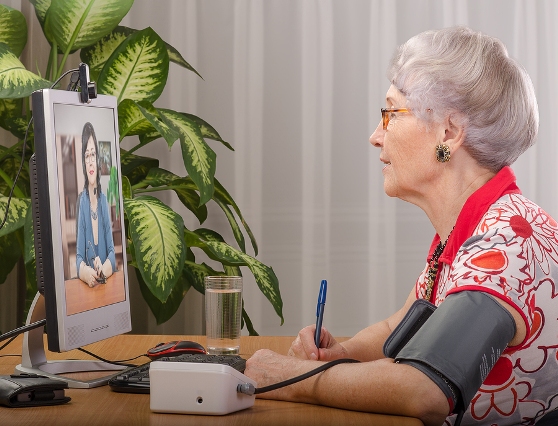To help keep patients safe and at home during the coronavirus crisis more and more doctors and other health care providers are turning to telehealth (a.k.a. telemedicine) appointments, which are remote e-visits using a digital communication device like a smartphone, tablet or computer.

Although telehealth has been around for a few years now, recent updates to regulations and a surge in demand has made it the easiest way to get many different types of medical care. Most telehealth appointments today tend to be primary care or follow-up visits that can assess symptoms or check on people who have had a medical procedure. Telehealth also works well for some specialties like dermatology or mental health care (counseling/therapy) services.
So, what can patients expect from a telehealth visit, and how should they prepare?
The first step is to call your doctor’s office to find out whether telemedicine visits are available and whether you will need to set up an account or install special software on your computer, phone or tablet.
Until recently, doctors were required to conduct telehealth visits through platforms such as Doxy, Thera-Link or MyChart that were compliant with the Health Insurance Portability and Accountability Act, or HIPAA. But some of those requirements have been relaxed in the current crisis, so many providers are using popular apps such as FaceTime, Skype and Zoom to conduct visits.
Once you know what technology you will be using, get familiar with it. You don’t want to spend the first 10 minutes of your visit trying to figure out how to unmute the audio.
For older patients that aren’t familiar or comfortable with technology, ask a relative or friend with a smartphone, tablet or laptop to assist you.
Take the time to clarify the purpose of the televisit before it begins. Prioritize a written list of three or four issues you want to discuss with your doctor and make a list of the medicines you’re taking, along with the dosages.
Also, have relevant medical devices or logs on hand, such as a penlight or smartphone flashlight for viewing a sore throat, a blood-pressure cuff and thermometer (or recent readings), blood-sugar logs if you’re diabetic or a food log if you have gastrointestinal problems.
If you’ve received medical care at different places, such as an urgent care facility or another doctor’s office, have your latest medical records with you during the telemedicine visit.
Wear loose clothing that will allow you to show your medical provider what is concerning you.
The length of the appointment may depend on the problem. A routine visit could be very quick, while others, such as a physical-therapy appointment, may last as long as a session at a clinic. Waiting rooms are sometimes replaced by virtual waiting rooms.
Before the visit ends, make sure you know the follow-up plan. Do you need to schedule an in-office visit, fill a prescription or get a referral to a specialist?
Right now, Medicare and Medicaid are covering the cost of telehealth visits (see medicare.gov/coverage/telehealth for details), and most private insurers are following suit.
If, however, you don’t have a primary care physician or need urgent care, you can get help through virtual health care service like Doctor on Demand (doctorondemand.com) or TeleDoc (teladoc.com). These services currently do not accept original Medicare, but they may be covered by private insurers including some Medicare Advantage plans – be sure you check.
Jim Miller publishes the Savvy Senior, a nationally syndicated column that offers advice for Boomers and Seniors.
Related Articles & Free Subscription

Health Coverage Options for Pre-Medicare-Age Spouses
How to Get Help with Medicare Coverage







Comment here